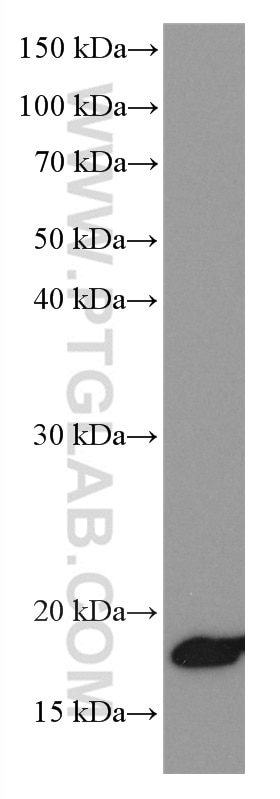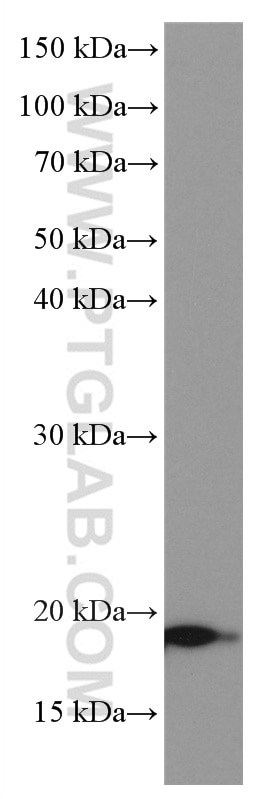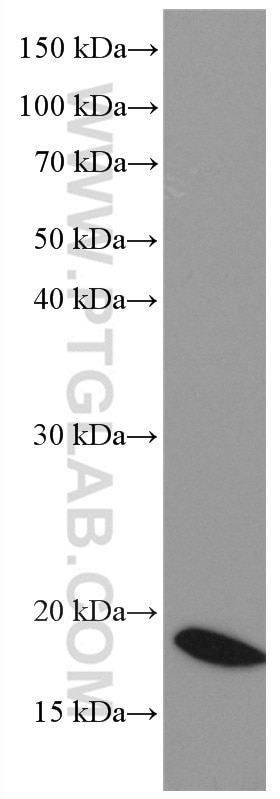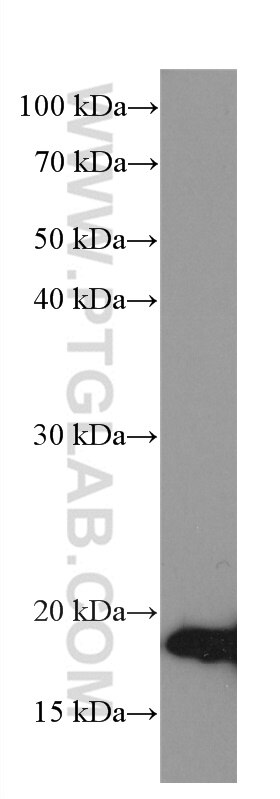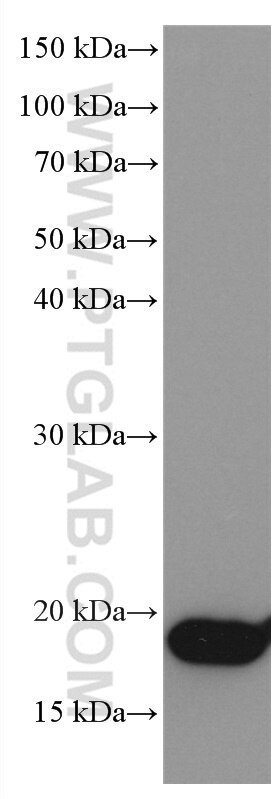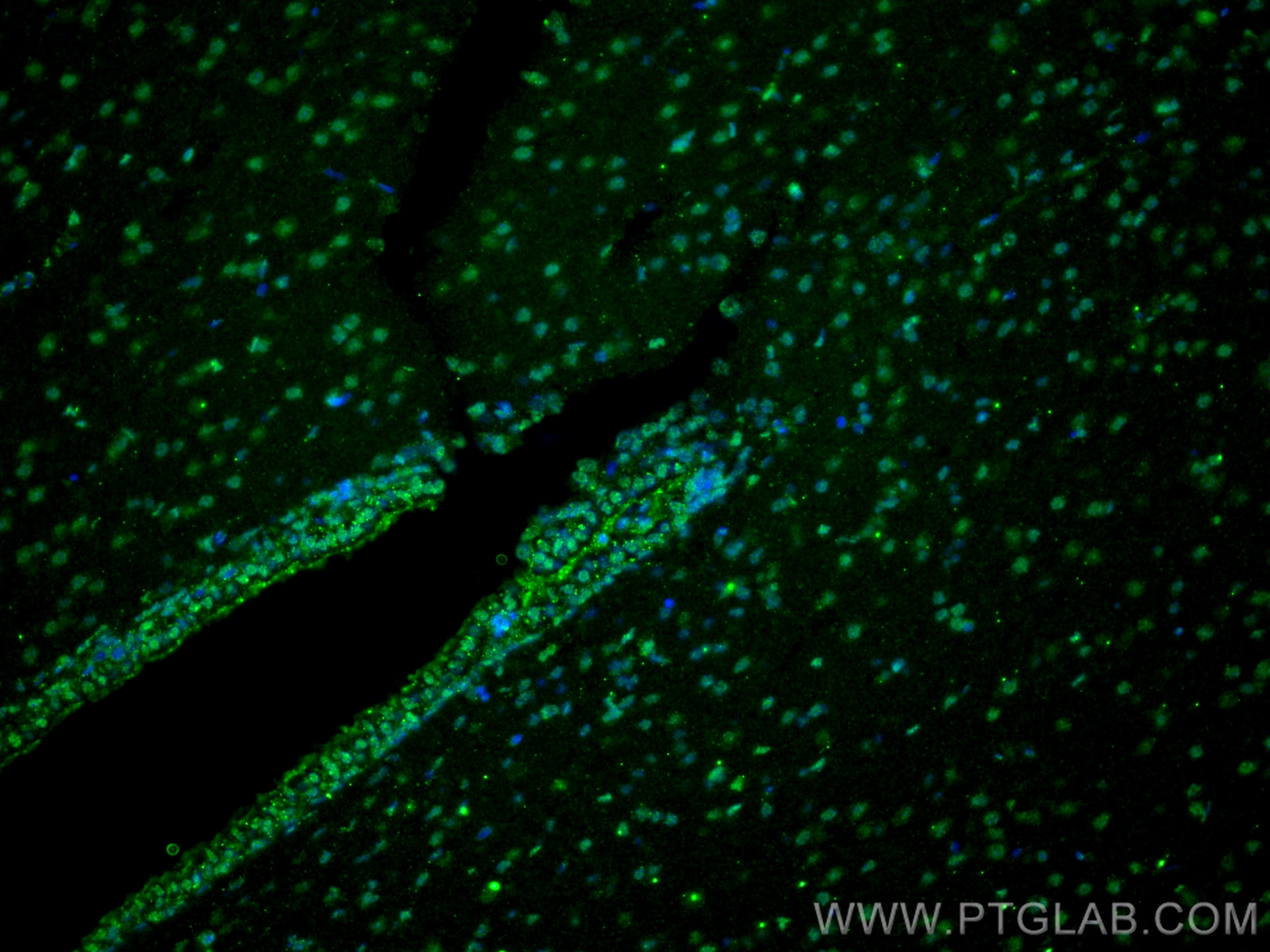Tested Applications
| Positive WB detected in | HEK-293 cells, Y79 cells, Neuro-2a cells, HeLa cells, mouse brain tissue |
| Positive IF-P detected in | rat brain tissue |
Recommended dilution
| Application | Dilution |
|---|---|
| Western Blot (WB) | WB : 1:1000-1:4000 |
| Immunofluorescence (IF)-P | IF-P : 1:400-1:1600 |
| It is recommended that this reagent should be titrated in each testing system to obtain optimal results. | |
| Sample-dependent, Check data in validation data gallery. | |
Product Information
66642-1-Ig targets NEUROG1 in WB, IF-P, ELISA applications and shows reactivity with human, mouse, rat samples.
| Tested Reactivity | human, mouse, rat |
| Host / Isotype | Mouse / IgG1 |
| Class | Monoclonal |
| Type | Antibody |
| Immunogen |
CatNo: Ag26438 Product name: Recombinant human NEUROG1 protein Source: e coli.-derived, PET28a Tag: 6*His Domain: 1-237 aa of BC008687 Sequence: MPARLETCISDLDCASSSGSDLSGFLTDEEDCARLQQAASASGPPAPARRGAPNISRASEVPGAQDDEQERRRRRGRTRVRSEALLHSLRRSRRVKANDRERNRMHNLNAALDALRSVLPSFPDDTKLTKIETLRFAYNYIWALAETLRLADQGLPGGGARERLLPPQCVPCLPGPPSPASDAESWGSGAAAASPLSDPSSPAASEDFTYRPGDPVFSFPSLPKDLLHTTPCFIPYH Predict reactive species |
| Full Name | neurogenin 1 |
| Calculated Molecular Weight | 237 aa, 26 kDa |
| Observed Molecular Weight | 20-25 kDa |
| GenBank Accession Number | BC008687 |
| Gene Symbol | NEUROG1 |
| Gene ID (NCBI) | 4762 |
| RRID | AB_2882001 |
| Conjugate | Unconjugated |
| Form | Liquid |
| Purification Method | Protein G purification |
| UNIPROT ID | Q92886 |
| Storage Buffer | PBS with 0.02% sodium azide and 50% glycerol, pH 7.3. |
| Storage Conditions | Store at -20°C. Stable for one year after shipment. Aliquoting is unnecessary for -20oC storage. 20ul sizes contain 0.1% BSA. |
Background Information
NEUROG1, also named BHLHA6, NEUROD3, NGN, and NGN1, is a 237 amino acid protein, which is expressed in embryonic nervous system. NEUROG1 acts as a transcriptional regulator that is involved in the initiation of neuronal differentiation. It activates transcription by binding to the E box (5'-CANNTG-3'). NEUROG1 can associate with chromatin to enhancer regulatory elements in genes encoding key transcriptional regulators of neurogenesis.
Protocols
| Product Specific Protocols | |
|---|---|
| IF protocol for NEUROG1 antibody 66642-1-Ig | Download protocol |
| WB protocol for NEUROG1 antibody 66642-1-Ig | Download protocol |
| Standard Protocols | |
|---|---|
| Click here to view our Standard Protocols |

